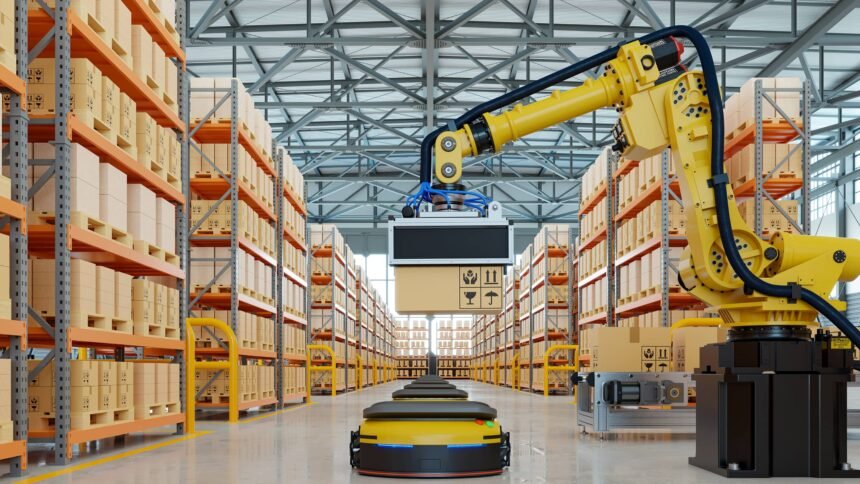Warehouses are the beating heart of many businesses. They keep products moving, orders fulfilled, and customers satisfied. But too often, the materials used inside these facilities are chosen with short-term savings in mind rather than long-term value. That mindset can quietly drain productivity, cause unnecessary wear and tear, and eat into profits.
Choosing superior materials for your warehouse isn’t just about durability. It’s a strategic investment that improves workflow, reduces downtime, and ultimately strengthens your bottom line. Here’s why focusing on quality from the ground up can pay off in measurable ways.
1. Building a Strong Foundation: The Hidden Cost of Inferior Materials
At first glance, low-cost warehouse materials may seem like a smart financial choice. But what looks affordable upfront can often become a recurring expense. Floors that crack under heavy loads, shelving that bends over time, and cheap pallets that break mid-operation all slow your team down.
When warehouse components fail prematurely, repairs and replacements pile up. That doesn’t just cost money—it disrupts operations. Every hour spent fixing broken equipment or waiting for parts is an hour of lost productivity.
Investing in stronger materials—such as reinforced steel shelving, high-grade concrete, and industrial coatings—helps your facility withstand constant stress. Over time, these materials maintain their structure and performance, reducing maintenance cycles and creating a smoother workflow.
2. Enhancing Efficiency Through Design and Durability
Quality materials don’t just last longer—they perform better. When floors are perfectly level, shelving remains stable, and storage systems are designed for high weight capacity, your team moves faster and with fewer errors.
Durability also improves safety, which is an often-overlooked factor in productivity. A well-built warehouse reduces the risk of accidents, keeping workers focused and confident in their environment.
For example, using durable polymer coatings on floors minimizes slip hazards and makes cleanup easier. Similarly, reinforced racking systems prevent collapses, allowing for efficient vertical storage and better space utilization. When every structural element works as intended, operations flow naturally.
According to Occupational Safety and Health Administration (OSHA) data, workplaces that invest in safety improvements often see measurable gains in productivity. Quality materials play a direct role in that equation.
3. Long-Term Savings That Outweigh Initial Costs
One of the most common objections to premium materials is cost. It’s true that high-quality flooring, racking, and equipment may come with a larger initial price tag—but the return on investment tells a different story.
Think of it this way: if your shelving system lasts twice as long, requires half as much maintenance, and reduces one major operational delay per quarter, the savings quickly add up. Quality materials reduce waste, downtime, and replacement costs.
Moreover, they contribute to energy efficiency. For example, insulated wall panels and high-performance LED lighting systems not only improve working conditions but also lower utility bills. These savings can directly boost profit margins.
A strategic approach is to assess materials over their life cycle—not just their upfront expense. When viewed over five to ten years, superior materials nearly always cost less overall.
4. How Quality Materials Support a Safer, More Productive Workforce
A warehouse built with superior materials provides more than structural integrity—it builds confidence. Employees working with sturdy platforms, smooth floors, and reliable lifts can focus on their tasks instead of worrying about hazards.
Safety is productivity’s silent partner. When workers feel secure, they move faster and make fewer mistakes. High-quality materials create a stable, predictable environment where efficiency becomes second nature.
Take ergonomic workstations, for instance. They minimize fatigue and improve precision, reducing the likelihood of accidents or rework. Similarly, well-constructed mezzanines and guardrails provide peace of mind during high-volume operations.
Investing in worker safety is a long-term commitment that always pays off. The result is higher morale, lower turnover, and a team that takes pride in their workspace.
5. Partnering with the Right Manufacturers
Not all materials are created equal. To truly benefit from superior warehouse investments, it’s essential to work with trusted manufacturers that understand industrial needs.
Choosing a reliable supplier means getting consistent quality, predictable lead times, and components designed for real-world conditions. This is where expertise and craftsmanship meet practicality.
For example, companies like Iron Bull Manufacturing specialize in heavy-duty industrial equipment built to last. Their focus on precision and performance ensures that warehouses operate efficiently without constant upkeep. Reliable partners like these help companies maintain momentum and avoid costly downtime.
6. Boosting Profitability Through Operational Excellence
When you invest in top-tier materials, you’re not just buying products—you’re improving your entire operational ecosystem. Better materials mean less damage to goods, faster turnaround times, and more predictable workflow patterns.
This efficiency trickles down to every aspect of the business. Faster order processing leads to higher customer satisfaction, which drives repeat sales. Reduced maintenance costs free up capital for other improvements. And smoother operations enable businesses to scale without fear of structural bottlenecks.
Many warehouse managers overlook how much profit is hidden in small daily efficiencies. A single upgrade—such as replacing worn-out flooring with reinforced materials—can have ripple effects across departments, from logistics to finance.
7. The Environmental and Reputational Advantages
Sustainability is no longer optional in modern business. Using high-quality, durable materials reduces waste and supports long-term resource efficiency.
When warehouses use recyclable metals, energy-efficient lighting, and eco-friendly coatings, they minimize their environmental footprint. These actions don’t just benefit the planet—they also enhance a brand’s reputation.
Companies that invest in sustainable materials are increasingly recognized by both consumers and business partners. According to Harvard Business Review, organizations with strong environmental practices often experience higher loyalty and long-term profitability.
By choosing superior materials, you’re positioning your warehouse—and your business—for a sustainable, future-ready advantage.
8. Making the Investment Work for You
Before upgrading, conduct a detailed materials audit. Identify areas with recurring repair costs, safety issues, or inefficiencies. Then, prioritize improvements that deliver the greatest impact on performance and safety.
Next, work with your suppliers to compare life-cycle costs. Don’t just look at price per unit; calculate the cost per year of use. Factor in maintenance, downtime, and energy use. This will help you make clear, data-driven decisions about where to invest.
Finally, communicate the “why” to your team. When employees understand the purpose behind material upgrades, they’re more likely to take care of new installations and operate equipment properly. The success of any improvement depends as much on people as it does on materials.
Conclusion: The Case for Quality
In the fast-paced world of warehouse logistics, every detail counts. The materials that support your operations directly influence how smoothly and profitably your business runs.
While inferior materials may save a little upfront, they cost more in the long run through maintenance, inefficiency, and downtime. By contrast, superior materials build a foundation for sustainable productivity, safety, and growth.
Choosing quality is more than a purchase decision—it’s a commitment to excellence. It’s an investment that pays for itself, year after year, in stronger performance and higher profits.









